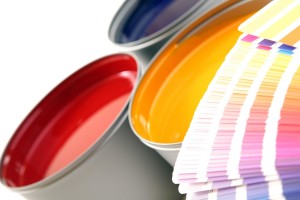
Basic, acid, solvent and direct dyes are wide ranging organic dyestuffs that are used in several industrial applications. The most common application associated with dyes is that of textile dyeing. Acid dyes are normally used on silk, wool and nylon fibers while basic dyes go towards coloring acrylic fibers whereas direct dyes are suited for linen, cotton, cellulose fibers. Solvent dyes which are soluble in organic solvents are suited for use on synthetic as well as natural fibers. However, here we will talk about dyes used for Inkjet inks.
The type of dye needed here is determined by the class of ink used, whether it is solvent, aqueous or hot-melt and also on the type of printer involved.
Aqueous – First Generation Inkjet Dyes
Aqueous ink-jet dyes comprise the first generation dyes which were chosen for their brightness, excellent aqueous solubility and reliable inks obtained from them. A constant good quality performance was assured from them. However, the increased sophistication of inkjet-printers over the past many years has led to increased need for inks and dyes competent to yield high quality printing. Several research efforts in ink formulation have also enhanced development of dyes with a focus on achieving several print properties. Lack of feathering, good water fastness, smear resistance, faster dry times, media compatibility and so on are just to name a few of them.
Solvent Inks- Later Entrant
Solvent based inks are commonly used in industrial applications which require printing of batch figures, bar codes, sell-by date and other data on packaging. The major advantage of using these inks over aqueous inks is their faster dry times and better suitability for printing non-porous or hydrophobic substrates printing. Solvent dyes normally come into the picture here as colorants with black being the major colour used. Solvent dyes manufacturers ensure that their dyes exhibit all the features required by superior inkjet printers.
Hot-Melt- Revolution in Inkjet Technology
These dyes as the name suggests turn from solid to liquid state on heating at about 60 degree to 125 degree C. These are used in digital printing and the process involves heating the ink at the required temperature and then ejecting it via a print-head on to the substrate. This superlative method ensures the formation of crisp, high-definition and instantaneous dry prints.
Properties of Inkjet Dyes
Whatever be the type of dye used they have to fulfill a number of strict criteria with regard to the color, solubility, colour strength, presence of electrolytes, toxicology, shade and thermal stability. Light, water and smear fastness are equally important.
Black colour is majorly used for printing but if colour printing is required then magenta, yellow and cyan; the three primary colours also assume importance. Bright dyes which have narrow absorption curves, high colour strengths, high solubility, water resistance, smear fast, thermal stability, Amens negative and do not have anions like chloride or sulfate are ideally preferred.
On a Concluding Note
Dyes are magical substances which change the total look of the substrate to which they are applied. Use them rightly and you will have an amazing resultant product!